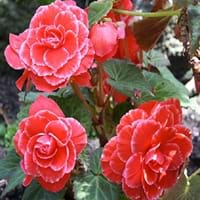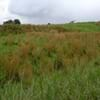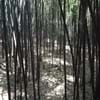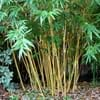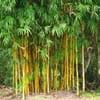Life Span
Perennial
Perennial
Type
Grass
Bulb or Corm or Tuber
Origin
United States, Northeastern United States, Mid-Atlantic United States, Southeastern United States, North-Central United States, Central United States, South-Central United States, Texas
Hybrid origin
Types
Virginia water horehound
'Bellagio Apricot' begonia, 'Bellagio Blush' begonia, 'Bellagio Pink' begonia
Number of Varieties
Not Available
Habitat
Along Railroads, Barren waste areas, Hill prairies, Mined land, Pastures, Roadsides, Rocky glades, Sandy areas, Upland, Upland clay prairies, Upland sand prairies, Upland sandy savannas, Upland savannas, Upland soils
Subtropical climates, Tropical regions
USDA Hardiness Zone
5-8
9-15
Sunset Zone
Not Available
21,22
Habit
Clump-Forming
Clump-Forming
Flower Color
Not Available
Salmon
Flower Color Modifier
Bicolor
Bicolor
Fruit Color
Not Available
Not Available
Leaf Color in Spring
Green
Green
Leaf Color in Summer
Light Green
Light Green
Leaf Color in Fall
Orange, Tan, Brown
Several shades of Green
Leaf Color in Winter
Tan, Sandy Brown
Light Green
Leaf Shape
Grass like
Heart-shaped
Plant Season
Summer, Fall, Winter
Summer, Fall
Sunlight
Full Sun, Partial Sun, Partial shade
Partial shade
Type of Soil
Loam, Sand
Loam, Sand
The pH of Soil
Acidic, Neutral, Alkaline
Acidic, Neutral
Soil Drainage
Well drained
Well drained
Bloom Time
Early Fall, Fall
Early Summer, Summer, Late Summer
Tolerances
Pollution, Drought
Not Available
Where to Plant?
Ground
Container, Ground, Pot
How to Plant?
Divison, Root Division, Seedlings
Seedlings, Transplanting
Plant Maintenance
Medium
Medium
Watering Requirements
Average Water Needs, Medium
Over-watering can cause leaf problems or root diseases, Requires regular watering, Water Deeply
In Summer
Lots of watering
Lots of watering
In Spring
Moderate
Moderate
In Winter
Average Water
Average Water
Soil pH
Acidic, Neutral, Alkaline
Acidic, Neutral
Soil Type
Loam, Sand
Loam, Sand
Soil Drainage Capacity
Well drained
Well drained
Sun Exposure
Full Sun, Partial Sun, Partial shade
Partial shade
Pruning
Remove damaged leaves, Remove dead branches, Remove dead leaves
Cut or pinch the stems, No pruning needed in the early stages, Prune if you want to improve plant shape, Prune to control growth, Remove dead or diseased plant parts
Fertilizers
All-Purpose Liquid Fertilizer
All-Purpose Liquid Fertilizer
Pests and Diseases
Red blotch
Aphids, Bacterial leaf spot, Botrytis Blight, Foliar nematode, Powdery mildew, Pythium rot, Rhizoctonia crown rot
Plant Tolerance
Drought
Drought
Flowers
Insignificant
Showy
Flower Petal Number
Single
Double
Foliage Texture
Fine
Coarse
Foliage Sheen
Matte
Glossy
Attracts
Birds, Butterflies
Not Available
Aesthetic Uses
Not Used For Aesthetic Purpose
Beautification
Beauty Benefits
Not Available
Not Available
Edible Uses
Insignificant
Yes
Environmental Uses
Air purification, Food for birds, Wildlife
Air purification
Medicinal Uses
Back pain, Diarrhea, Frostbite, Itching, Piles, Sore Eyes, Sore throat
Bronchitis, Candidiasis, Cold, Digestive disorders, Dysentry, Haemoptysis, Liver problems, Menstrual Disorders, Scrofula, Swelling
Part of Plant Used
Root, Seeds, Stem
Whole plant
Other Uses
Cattle Fodder, Used As Food, Used as Ornamental plant
Used as Ornamental plant
Used As Indoor Plant
No
Yes
Used As Outdoor Plant
Yes
Yes
Garden Design
Dried Flower/Everlasting, Wildflower
Bedding Plant, Container, Hanging Basket, Houseplant, Tropical
Botanical Name
ANDROPOGON virginicus
BEGONIA 'Fortune Salmon'
Common Name
Broomsedge, Broomsedge Bluestem
Fortune Salmon Tuberous Begonia, Tuberous Begonia
In Hindi
Broomsedge grass
tuberous बिगोनिया
In German
broomsedge Gras
Knollenbegonie
In French
broomsedge herbe
Bégonia tubéreux
In Spanish
hierba Broomsedge
Begonia tuberosa
In Greek
Broomsedge γρασίδι
Οζώδους Begonia
In Portuguese
Broomsedge grama
tuberosa Begonia
In Polish
Broomsedge trawy
Begonia guzowate
In Latin
Broomsedge herba
Morbus Begonia
Phylum
Magnoliophyta
Magnoliophyta
Class
Liliopsida
Magnoliopsida
Order
Cyperales
Cucurbitales
Family
Poaceae
Begoniaceae
Clade
Angiosperms, Commelinids, Monocots
Angiosperms, Eudicots, Rosids
Tribe
Andropogoneae
Not Available
Subfamily
Panicoideae
Not Available
Number of Species
Not Available
Season and Care of Broomsedge and Tuberous Begonia
Season and care of Broomsedge and Tuberous Begonia is important to know. While considering everything about Broomsedge and Tuberous Begonia Care, growing season is an essential factor. Broomsedge season is Summer, Fall and Winter and Tuberous Begonia season is Summer, Fall and Winter. The type of soil for Broomsedge is Loam, Sand and for Tuberous Begonia is Loam, Sand while the PH of soil for Broomsedge is Acidic, Neutral, Alkaline and for Tuberous Begonia is Acidic, Neutral.
Broomsedge and Tuberous Begonia Physical Information
Broomsedge and Tuberous Begonia physical information is very important for comparison. Broomsedge height is 60.96 cm and width 30.48 cm whereas Tuberous Begonia height is 20.30 cm and width 20.30 cm. The color specification of Broomsedge and Tuberous Begonia are as follows:
Broomsedge flower color: Not Available
Broomsedge leaf color: Green
Tuberous Begonia flower color: Salmon
- Tuberous Begonia leaf color: Green
Care of Broomsedge and Tuberous Begonia
Care of Broomsedge and Tuberous Begonia include pruning, fertilizers, watering etc. Broomsedge pruning is done Remove damaged leaves, Remove dead branches and Remove dead leaves and Tuberous Begonia pruning is done Cut or pinch the stems, No pruning needed in the early stages, Prune if you want to improve plant shape, Prune to control growth and Remove dead or diseased plant parts. In summer Broomsedge needs Lots of watering and in winter, it needs Average Water. Whereas, in summer Tuberous Begonia needs Lots of watering and in winter, it needs Average Water.

